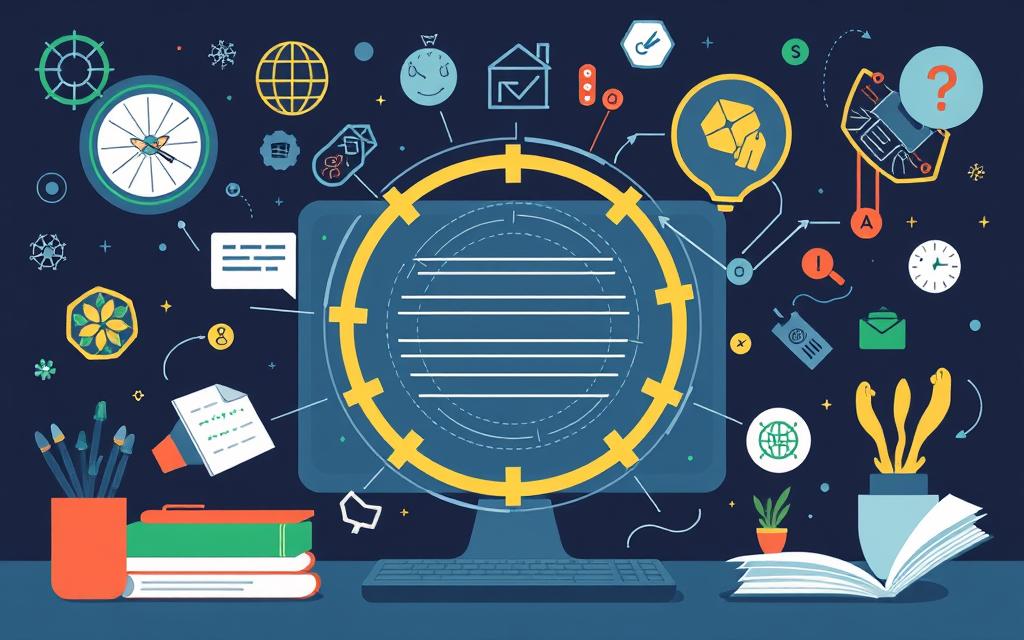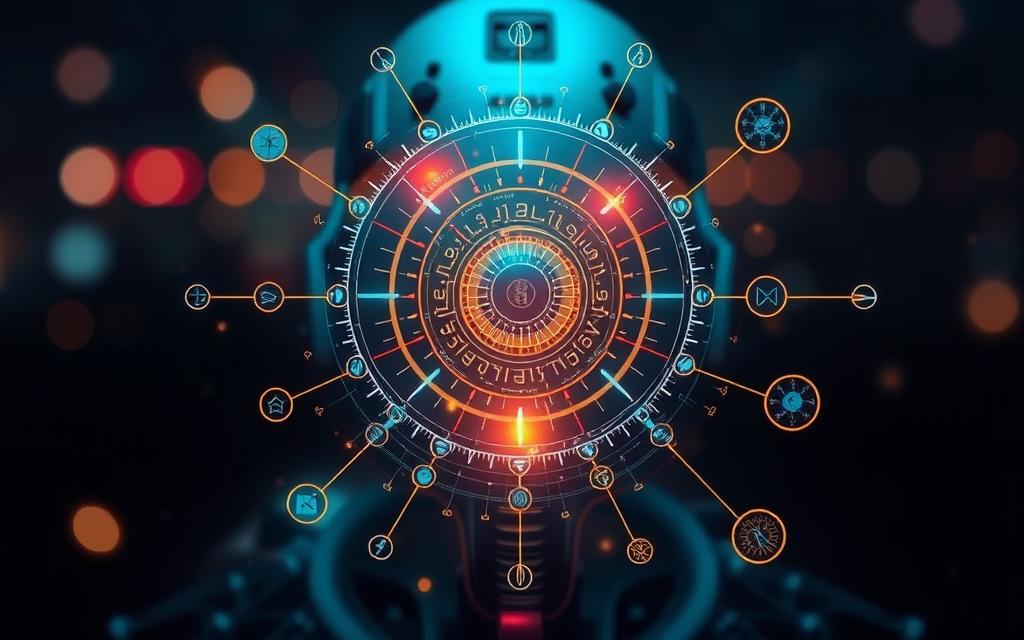Table of Contents
The rise of advanced writing tools like ChatGPT, Google Gemini, and Claude has created a new challenge: distinguishing between human and machine-generated content.
As AI-generated content becomes increasingly sophisticated, detection technologies have emerged to identify text created by artificial intelligence systems.
This comprehensive guide will explore how these detection technologies work, their accuracy rates, and the best tools available in 2024.
Understanding the capabilities and limitations of content detection technology is crucial across various contexts, including education, publishing, marketing, and content creation.
The Growing Prevalence of AI-Generated Content
With the advancement of natural language processing, AI-generated content is on the rise. AI-generated text, also known as machine-generated text or automated text, is a product of techniques that enable machines to mimic human language patterns and generate text.
The benefits of AI-generated text include its ability to save time and resources by automating repetitive writing tasks and producing large volumes of content quickly. However, it’s essential to be mindful of its limitations and potential risks.
- Millions of users are leveraging AI writing tools daily, transforming content creation across industries.
- Modern AI language models produce remarkably human-like text with minimal human input.
- The accessibility of tools like ChatGPT has democratized content creation but raised concerns about authenticity.
| Content Type | Pre-AI Era | Post-AI Era |
|---|---|---|
| Blogs | Manually written | AI-assisted writing |
| Social Media | Human-generated | Increasingly AI-generated |
| Academic Papers | Entirely human-written | Some AI-assisted research |
Why Detecting AI Content Matters
The ability to detect AI-generated content is becoming increasingly crucial in maintaining the integrity of various forms of writing. As AI technology advances, the line between human-generated and AI-generated content becomes blurred, raising several concerns.
Academic institutions face challenges when students submit AI-generated essays and papers without proper attribution, undermining educational assessment and content integrity. Similarly, content publishers risk credibility issues when readers discover undisclosed AI-generated material presented as human writing.
- Search engines like Google are developing sophisticated methods to identify and potentially penalize websites that rely heavily on unedited AI content.
- Legal and ethical considerations arise regarding intellectual property, copyright, and proper attribution when using AI-generated content.
- Professional writers and content creators have legitimate concerns about AI tools potentially devaluing their specialized skills and expertise.
Transparency about AI usage builds trust with audiences and maintains the authenticity that many readers still prefer in certain content categories. Detection tools provide accountability and help establish appropriate boundaries for AI use in various professional and educational contexts, ensuring the detection of AI-generated content is a critical aspect of content detection.
As stated by a recent publication, “
The future of content creation depends on the ability to distinguish between human and AI-generated content.
” This highlights the importance ofcontentdetection in maintaining trust and authenticity in digital media.
How AI Detector Tools Work
AI detector tools utilize advanced pattern recognition to differentiate between human and AI-generated text. These tools are crucial in maintaining the integrity of content in various fields, from education to publishing.
The functionality of these detector tools is based on sophisticated algorithms that analyze linguistic features such as predictability, repetition patterns, and sentence structure complexity. Most detectors employ machine learning models trained on vast datasets containing both human-written and AI-generated content.
The detection process involves breaking down text into smaller sections for detailed analysis, then aggregating results to produce an overall probability score. Advanced detectors can identify content from specific AI models like GPT-4 or Claude by recognizing their unique “fingerprints.”
| Feature | Human Writing | AI-Generated Writing |
|---|---|---|
| Predictability | Variable | High |
| Repetition Patterns | Less Common | More Common |
| Sentence Structure | Varied | Often Uniform |
Popular AI Detector Tools in 2024
As AI-generated content becomes increasingly prevalent, the demand for effective AI detector tools has skyrocketed in 2024. Businesses and individuals are seeking reliable solutions to identify machine-generated content.
Grammarly AI Detector

Grammarly’s AI Detector is a popular choice for content creators. It offers advanced features to detect AI-generated text, ensuring the authenticity of the content. With its robust algorithms, it provides accurate detection results.
Originality.ai

Originality.ai has established itself as one of the most accurate AI content detection systems. It specializes in detecting content from the latest AI models, including GPT-4 and Claude3.7. The platform’s dedicated “Red Team” continuously tests evasion strategies to improve detection capabilities.
Key features of Originality.ai include sentence-level highlighting and complementary tools like plagiarism checking and readability analysis.
Free vs. Paid AI Detector Options

Free and paid AI detector options cater to different user needs, ranging from casual content checking to professional content creation. Free AI detector tools provide basic detection capabilities with limited features, often suitable for occasional personal use or small-scale content checking.
On the other hand, paid detection services offer significantly higher accuracy rates, more detailed analysis, and additional features like plagiarism checking and content optimization. Free detectors typically have usage limitations such as character count restrictions, daily scan limits, or reduced accuracy compared to premium alternatives.
Professional content creators, educational institutions, and businesses generally benefit from the advanced capabilities and reliability of paid detection tools. Many premium services offer tiered pricing models based on usage volume, making them accessible for different organizational needs and budgets.
Some paid tools provide API access for integration with content management systems, enabling automated detection within existing workflows. Free trial periods offered by premium services allow users to evaluate detection accuracy and features before committing to a subscription.
The cost-benefit analysis should consider the potential risks of false positives/negatives against the investment in more reliable detection technology.
Key Features of an Effective AI Detector
The key to successful AI detection lies in understanding its core features. An effective AI detector is not just about identifying machine-generated content, but doing so with precision and reliability.
- High accuracy rates with minimal false positives are the foundation of any effective AI detection tool, ensuring legitimate human content isn’t incorrectly flagged.
- Comprehensive model coverage enables detection across multiple AI systems, including GPT models, Claude, Google Gemini, and other popular text generators.
- Sentence-level highlighting helps users identify specific problematic sections rather than just providing overall document scores.
- Regular algorithm updates are essential as AI writing models evolve and new evasion techniques emerge in the detection arms race.
- Detailed reporting features provide actionable insights about detected content, including confidence levels and specific patterns identified.
- User-friendly interfaces make detection accessible to non-technical users while still providing detailed analysis for experts.
- Integration capabilities with content management systems, learning management systems, and writing platforms streamline the detection workflow.
- Customizable sensitivity settings allow users to adjust detection thresholds based on their specific use case and tolerance levels.
Understanding AI Detector Accuracy
The accuracy of AI detection tools varies, making it essential to comprehend their limitations. While AI detectors can help assess whether text appears to be AI-generated, currently, there is no AI detector that can conclusively determine whether AI was used to produce text.
Several factors influence the accuracy of AI detectors, including the algorithms used and the specific characteristics of the text being analyzed. The detection accuracy can be affected by factors such as the length of the text sample and the presence of technical content.
- AI detection accuracy varies significantly between tools, with the best systems achieving 95%+ accuracy rates under ideal conditions.
- Detection accuracy tends to be higher for identifying content from AI models the detector was specifically trained to recognize.
- No current detector can claim 100% accuracy, making it crucial to use these tools as part of a broader evaluation process.
Understanding these limitations is crucial for making informed decisions based on detection results. By acknowledging the variability in AI detector accuracy, users can effectively integrate these tools into their content evaluation processes.
Common Challenges and Limitations in AI Detection
The effectiveness of AI detectors is hindered by several limitations and biases. AI content detectors can be biased, misinterpreting writing styles and flagging content as less authentic, especially with writers whose primary language is not English.
Several challenges contribute to the limitations of AI detection tools. These include language bias in detection systems, which can lead to higher false positive rates for non-native English writers. Technical and specialized texts often trigger false positives due to their structured nature and domain-specific vocabulary resembling AI patterns.
Other challenges faced by AI detectors include the ability of “humanizing” techniques to evade detection, the difficulty in analyzing shorter text samples, and struggles with content translated from other languages. Highly creative or unconventional writing styles may also be incorrectly flagged.
| Challenge | Description | Impact on Detection |
|---|---|---|
| Language Bias | Detection systems biased towards native English patterns | Higher false positives for non-native English writers |
| Technical Texts | Structured nature and domain-specific vocabulary | Often misclassified as AI-generated |
| Humanizing Techniques | Paraphrasing AI output or blending human and AI content | Can evade detection systems |
To overcome these challenges, it’s essential to continually update and refine AI detectors and consider diverse writing styles and language patterns. By doing so, we can improve the accuracy of AI detection and reduce false positives.
Using AI Detectors in Educational Settings

Educational settings are increasingly adopting AI detection tools to uphold academic integrity and promote original work among students. As AI writing tools become more accessible, the need for effective detection mechanisms grows. Institutions are implementing clear policies regarding AI usage, detection procedures, and consequences for undisclosed AI-generated submissions.
Effective Implementation Strategies include adopting a “process-oriented” approach, focusing on documenting the writing process rather than just the final product. Detection tools like Grammarly’s Authorship feature track content creation in real-time, providing evidence of authentic student work. Educators are also developing new assessment strategies that emphasize in-class writing, oral defense of written work, and process documentation.
By combining AI detection technology with proactive discussions about appropriate AI use, educational institutions can foster a culture of academic integrity. Detection tools provide valuable teaching moments about citation, attribution, and the proper role of AI assistance in academic work, helping students understand the importance of original work.
AI Detectors for Content Publishers and Marketers

To uphold their brand’s integrity, content publishers and marketers are leveraging AI detectors as part of their quality assurance process. AI detection tools help ensure that the content is original, trustworthy, and resonates with human audiences.
Content teams employ these tools to check content from freelancers and agencies, verifying that it aligns with their brand voice and doesn’t contain generic AI patterns. SEO considerations also drive the adoption of AI detection, as search engines develop methods to identify and potentially devalue AI-generated content.
By implementing AI detectors, publishers can maintain editorial standards, optimize for SEO, and ensure content authenticity. This helps content strategists balance efficiency and authenticity, identifying where AI assistance can enhance quality without compromising brand integrity.
Best Practices for Using AI Detector Tools
To effectively utilize AI detector tools, it’s crucial to understand their capabilities and limitations. Establishing clear organizational policies regarding acceptable AI usage and detection thresholds is a fundamental step before implementing these tools.
For critical content, using multiple detection tools can help cross-reference results, minimizing false positives and negatives. Detection should be part of a broader content quality process rather than relying solely on AI scores for decision-making.
Consider the context and purpose of the content when interpreting detection results, as different standards may apply for different content types. Maintaining transparency with stakeholders about the use of AI detection in the content evaluation process is also essential.
- Regularly update detection tools and methodologies to maintain effective identification capabilities as AI writing technology evolves.
- Train content teams on both detection tool usage and appropriate AI assistance to establish balanced, ethical practices.
- Document detection results systematically, especially in educational or professional settings where accountability is essential.
For more insights on detecting AI-generated content, visit CNET’s guide on how to detect AI. Using detection insights constructively can improve content quality, focusing on enhancing authenticity where needed.
The Future of AI Detection Technology
The ongoing battle between AI content generation and detection is driving innovation in both fields. As AI-generated content becomes more sophisticated, detection tools are evolving to identify increasingly subtle patterns in machine-generated text.
Future detection tools will likely incorporate multimodal analysis, examining not just text patterns but also contextual relevance and factual consistency. This advancement will be crucial in the ongoing detection arms race, where text generation models continually improve their ability to mimic human writing patterns.
- Blockchain and cryptographic verification may emerge as complementary technologies to establish content provenance and authenticate human authorship.
- Regulatory frameworks may require content labeling or disclosure for AI-generated text, creating new compliance roles for detection technology.
- Detection systems will become more specialized for different content types and industries, with custom models for academic, journalistic, and marketing contexts.
As detection technology advances, ethical considerations will become increasingly important, impacting hiring decisions, academic evaluations, and content monetization. The integration of detection technology directly into content creation platforms will create real-time feedback loops during the writing process.
Conclusion
The rise of machine-generated content has made AI detection a critical component of maintaining digital integrity. As the line between human and machine-generated content continues to blur, AI detector tools have become essential resources. The most effective approach to AI detection combines technological solutions with human judgment, recognizing both the capabilities and limitations of current tools.
Organizations across various sectors are developing nuanced policies that balance the benefits of AI assistance with authenticity requirements. As detection technology evolves, it will play an increasingly important role in maintaining content integrity, transparency, and appropriate attribution. Ultimately, AI detector tools serve the broader goal of ensuring that technology enhances rather than diminishes the value of human creativity and expertise in content creation.
FAQ
What is the primary function of an AI content detection tool?
The primary function of an AI content detection tool is to identify whether a piece of content, such as an essay or article, was written by a human or generated using a language model.
How do AI detector tools analyze content?
AI detector tools analyze content by examining its linguistic features, such as syntax, semantics, and stylistics, to determine its likelihood of being machine-generated.
What are some key features to look for in an effective AI detector?
An effective AI detector should have high accuracy, be able to handle various content types, and provide detailed analysis and reporting features to support content integrity.
Can AI detectors be used in educational settings?
Yes, AI detectors can be used in educational settings to help educators verify the originality of student submissions and detect potential instances of academic dishonesty.
How accurate are AI detector tools?
The accuracy of AI detector tools can vary depending on the specific tool and the complexity of the content being analyzed, but top models can achieve accuracy rates above 90%.
Are there free AI detector tools available?
Yes, there are free AI detector tools available, although they may have limitations in terms of features or accuracy compared to paid options.
What are some popular AI detector tools used by content publishers and marketers?
Popular AI detector tools used by content publishers and marketers include Grammarly’s AI detector and Originality.ai, which offer advanced features for detecting machine-generated content.
How can AI detectors help maintain content integrity?
AI detectors can help maintain content integrity by identifying and flagging potentially machine-generated content, enabling publishers and marketers to verify the authenticity of their content.









